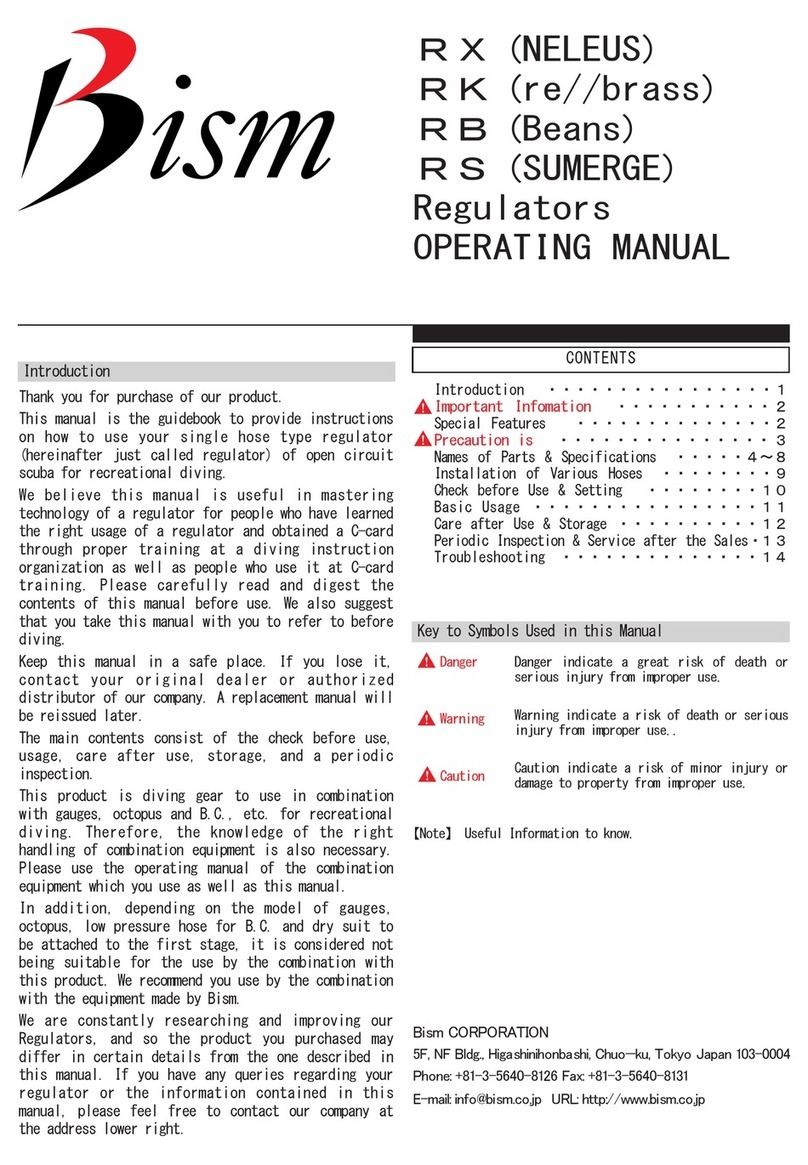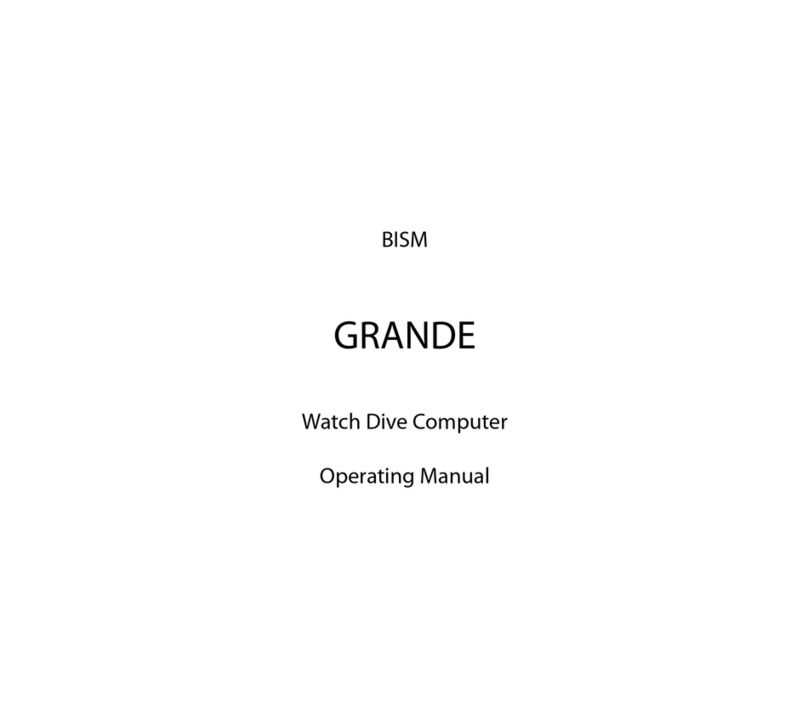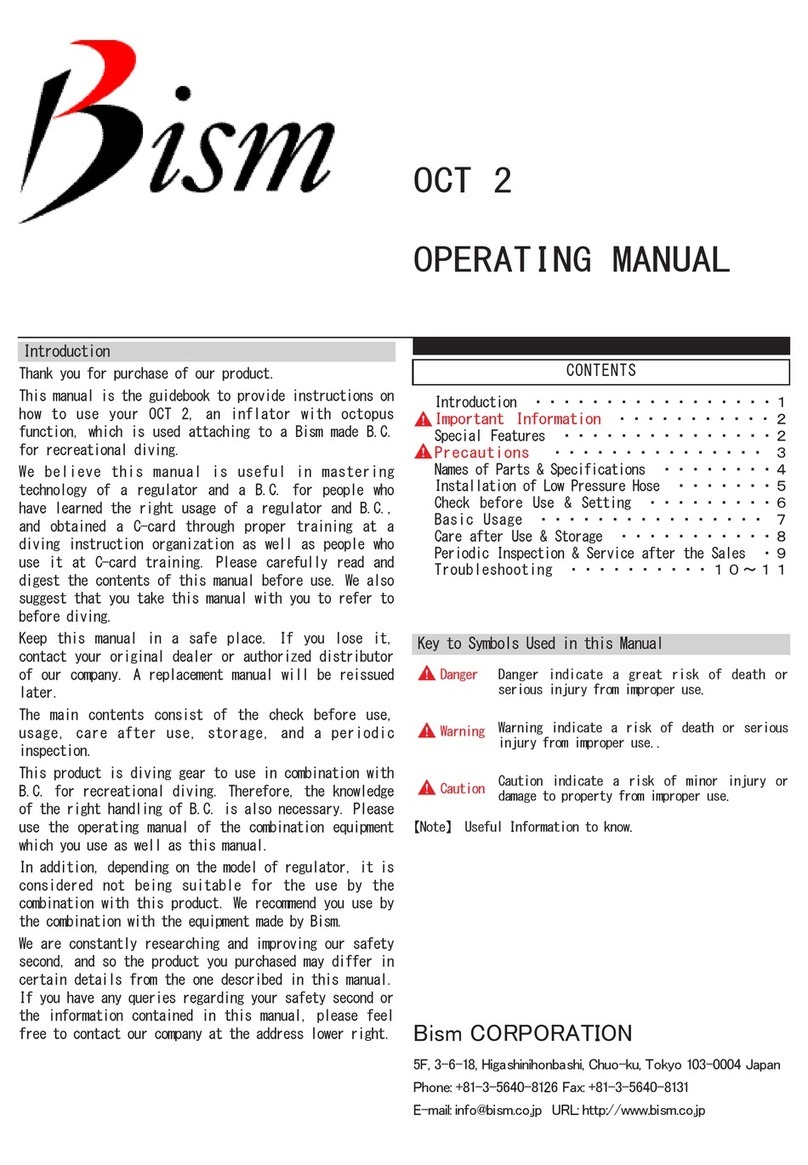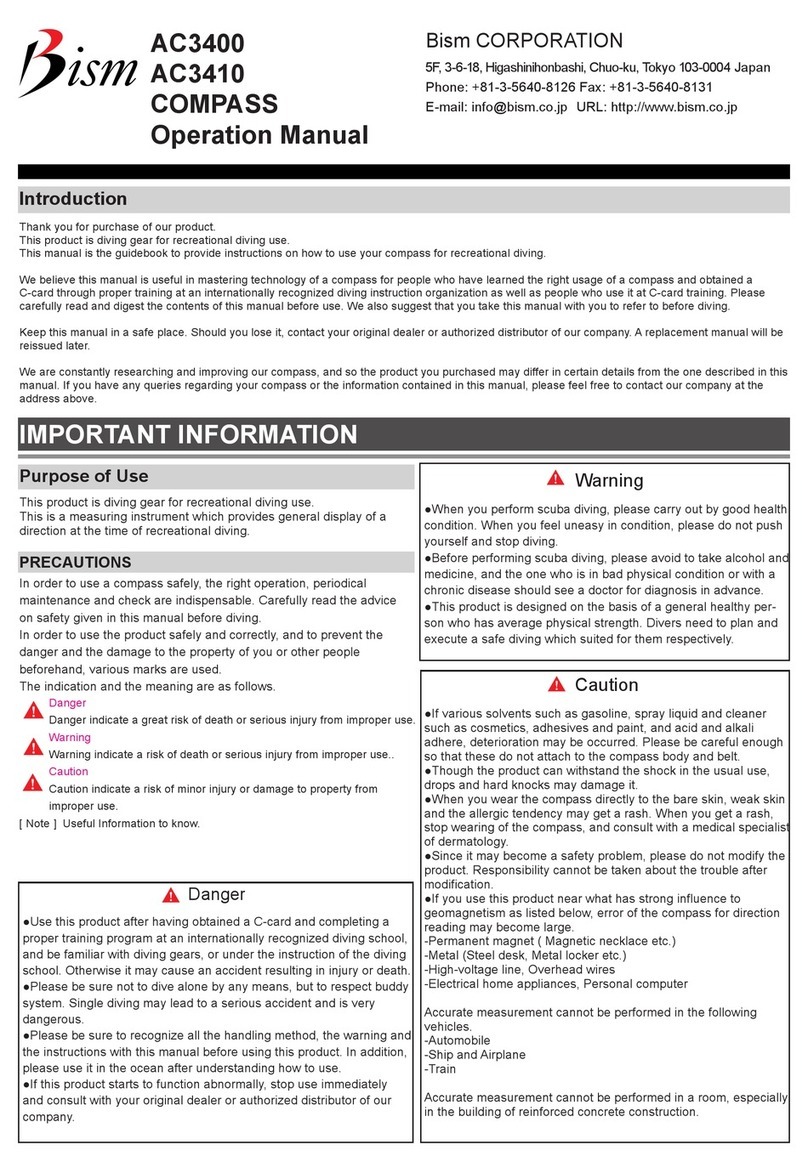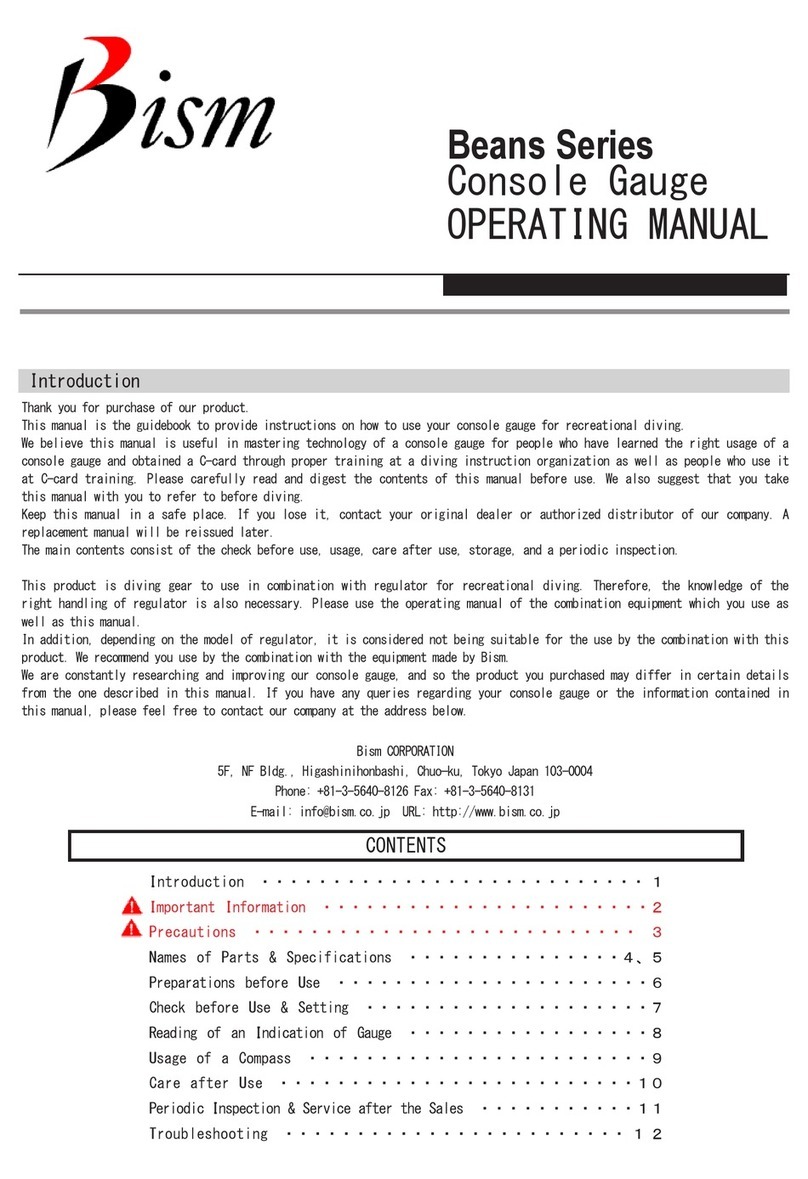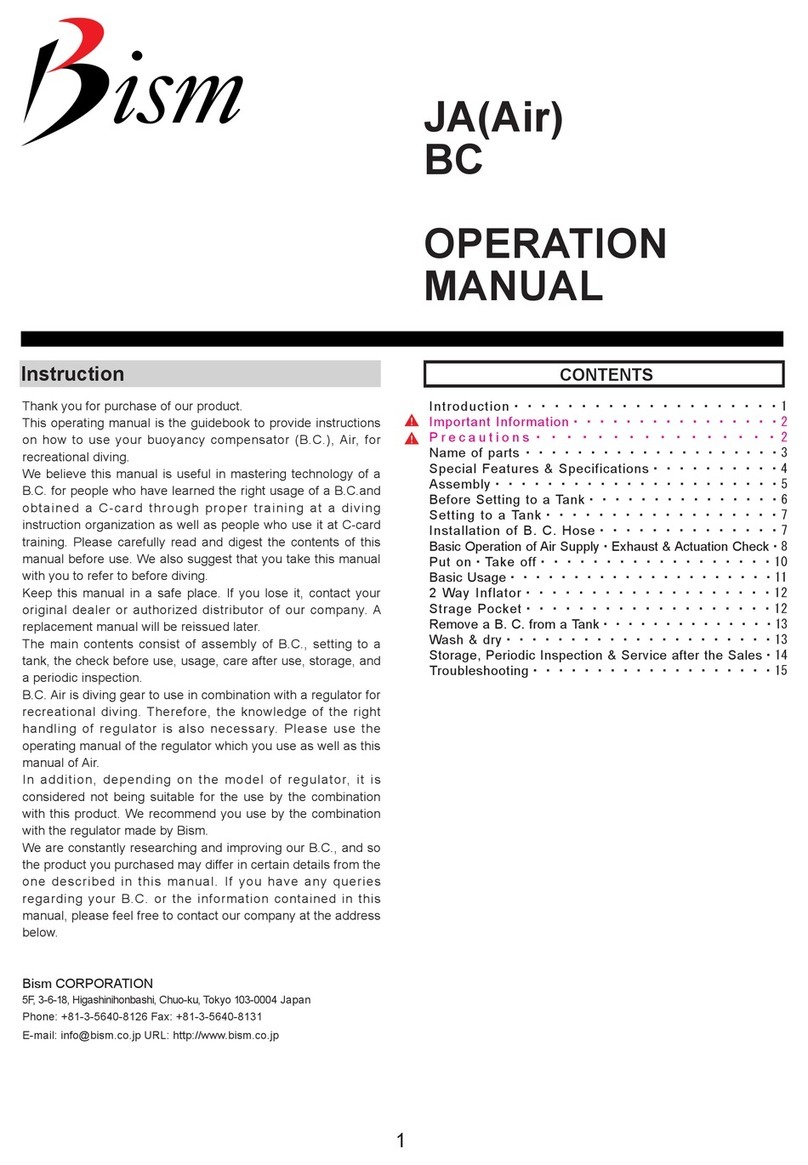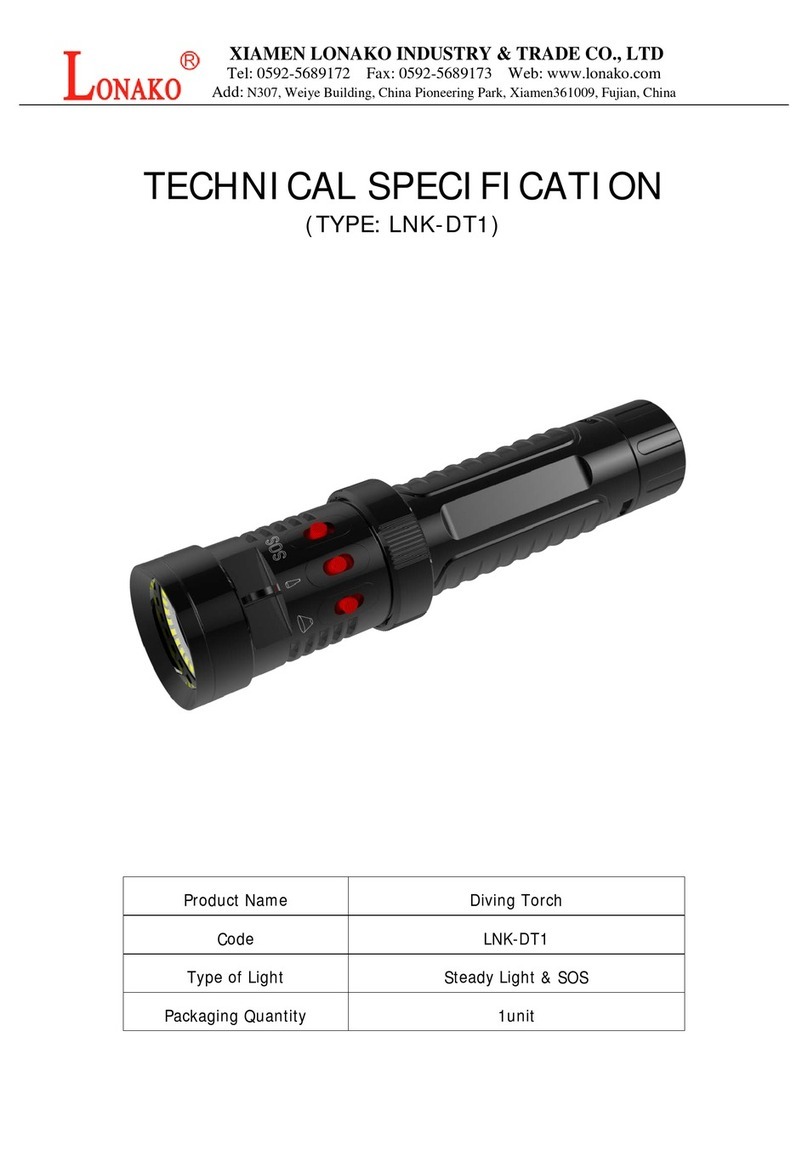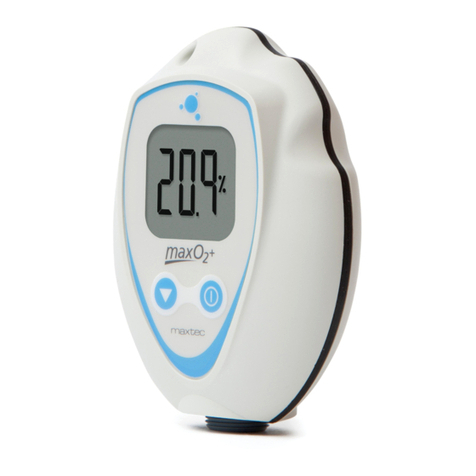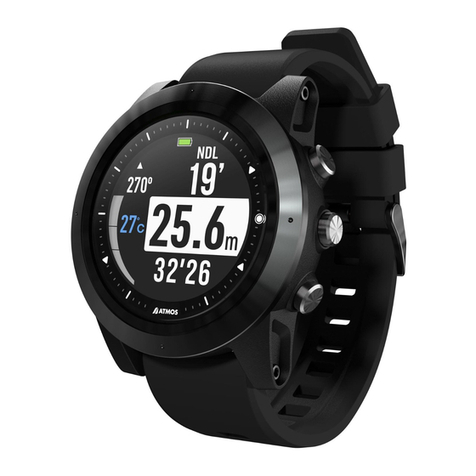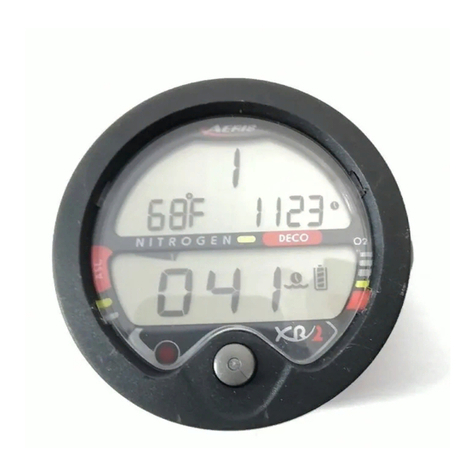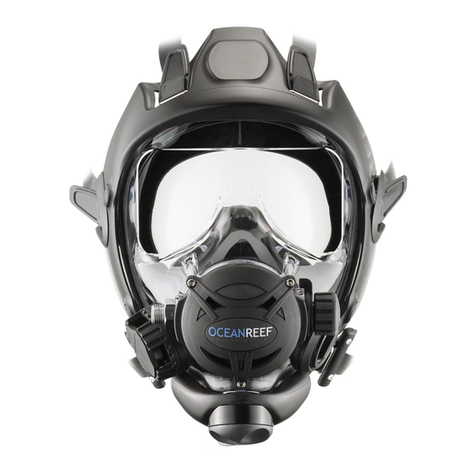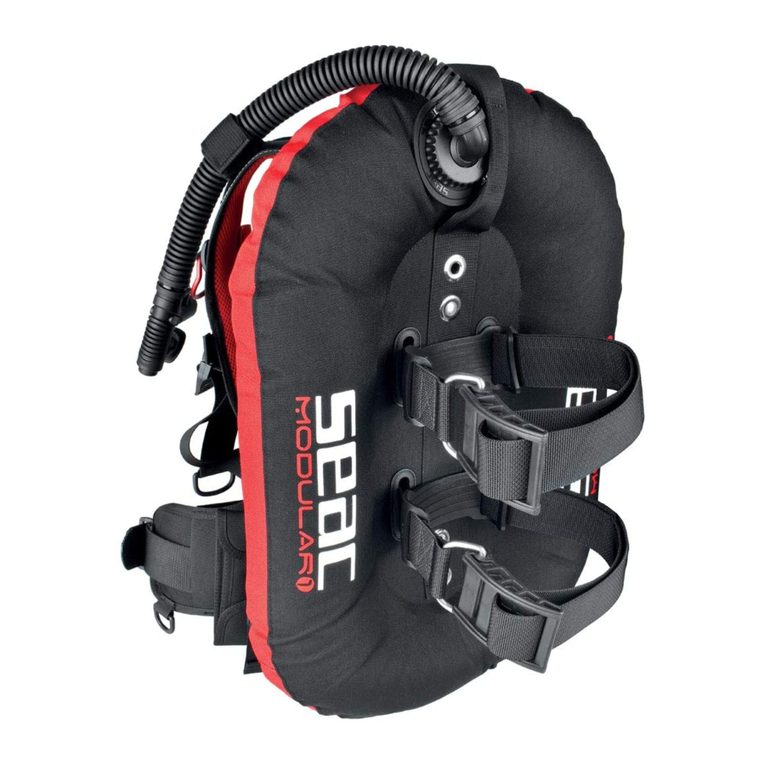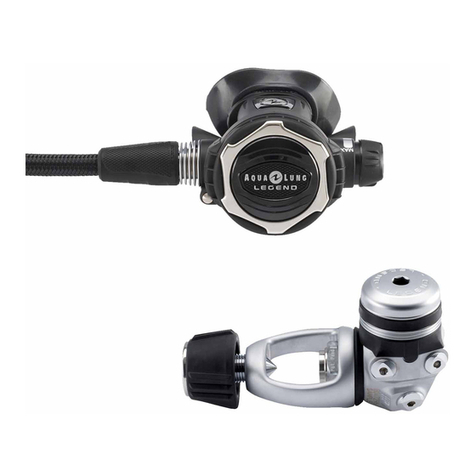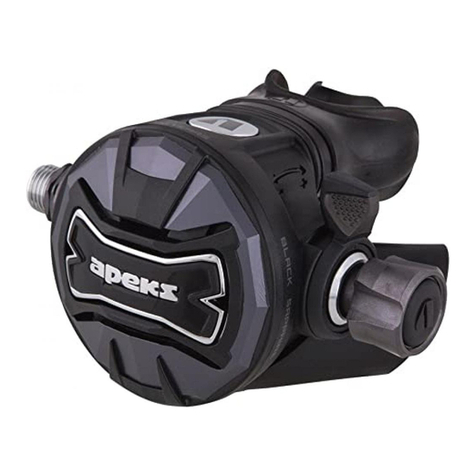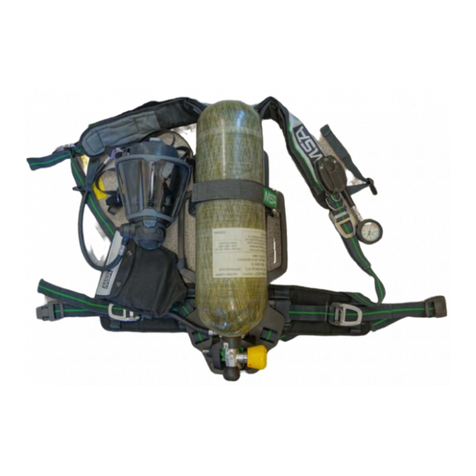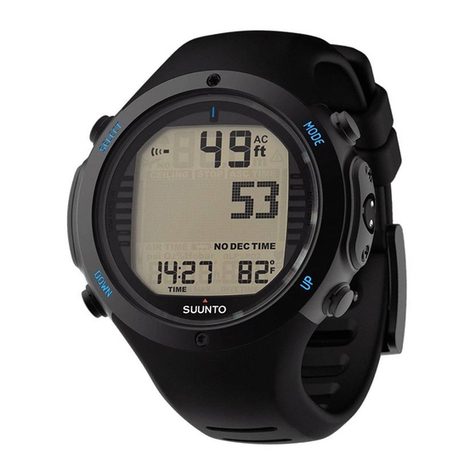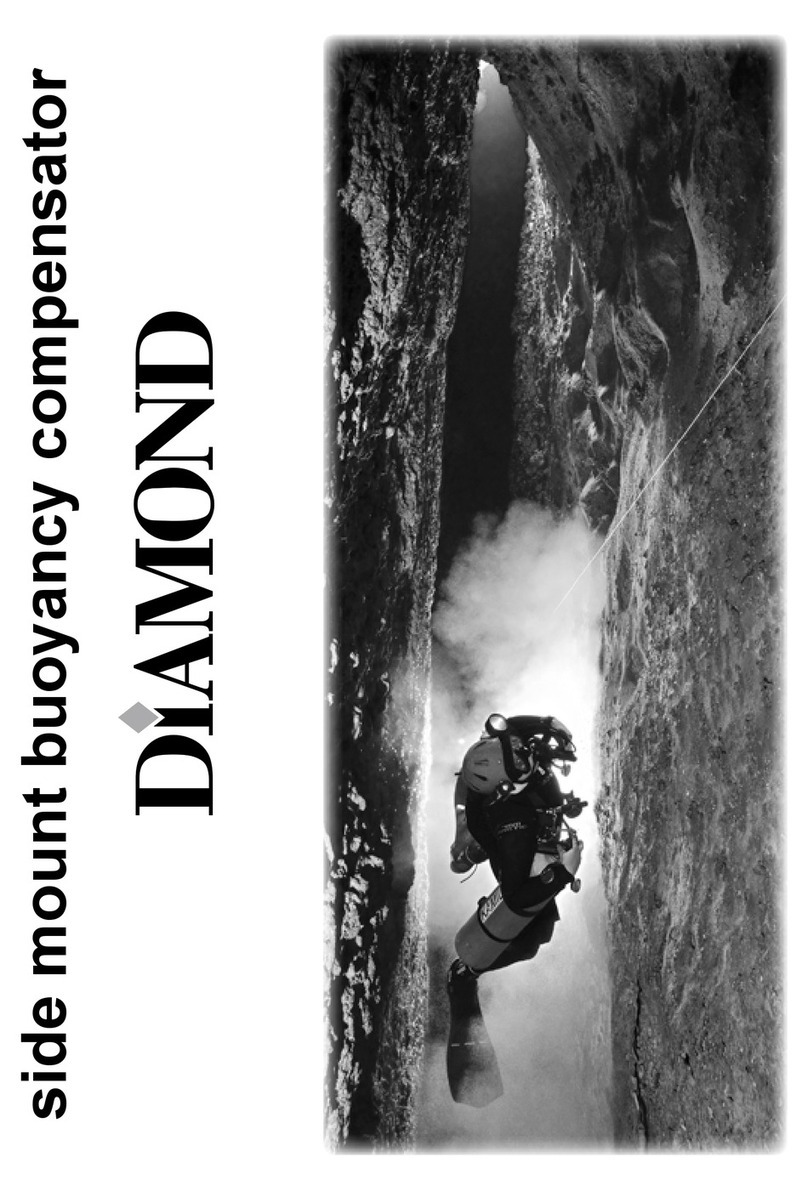Bism GP2611 User manual

GP2611
Pressure Gauge
OPERATING MANUAL
Introduction
Thank you for purchase of our product.
This manual is the guidebook to provide instructions
on how to use your pressure gauge, GP2611, for
recreational diving.
We believe this manual is useful in mastering
technology of a pressure gauge for people who have
learned the right usage of a pressure gauge and
obtained a C-card through proper training at a diving
instruction organization as well as people who use it
at C-card training. Please carefully read and digest
the contents of this manual before use. We also
suggest that you take this manual with you to refer
to before diving.
Keep this manual in a safe place. Should you lose it,
contact your original dealer or authorized
distributor of our company. A replacement manual will
be reissued later.
The main contents consist of the check before use,
usage, care after use, storage and a periodic
inspection.
This pressure gauge is diving gear to use in
combination with regulator for recreational diving.
Therefore, the knowledge of the right handling of
regulator is also necessary. Please use the operating
manual of the regulator which you use as well as this
manual for the pressure gauge. In addition, depending
on the model of regulator, it is considered not being
suitable for the use by the combination with this
product. We recommend you use the regulator made by
Bism.
We are constantly researching and improving our
pressure gauge, and so the product you purchased may
differ in certain details from the one described in
this manual. If you have any queries regarding your
pressure gauge or the information contained in this
manual, please feel free to contact our company at
the address below.
CONTENTS
Introduction ・・・・・・・・・・・・・・・・・1
Important Information
・・・・・・・・・・・
2
Features ・・・・・・・・・・・・・・・・・・・2
Precautions
・・・・・・・・・・・・・・・ 3
Names of Parts & Specifications ・・・・・・・・4
Preparations before Use ・・・・・・・・・・・5
Check before Use & Setting ・・・・・・・・・5
Reading and Usage ・・・・・・・・・・・・・・6
Care after Use ・・・・・・・・・・・・・・・・6
Periodic Inspection・Service after the Sales ・7
Troubleshooting・ ・・・・・・・・・・・・・・7
Key to Symbols Used in this Manual
Danger
Warning
Caution
【Note】
Bism CORPORATION
5F, 3-6-18, Higashinihonbashi, Chuo-ku, Tokyo 103-0004 Japan
Phone: +81-3-5640-8126 Fax: +81-3-5640-8131
E-mail: info@bism.co.jp URL: http://www.bism.co.jp
“Danger”is used to indicate the presence of a
hazard which highly causes severe personal
injury and death if the warning is ignored.
“Warning”is used to indicate the presence of
a hazard which can probably cause severe
personal injury and death if the warning is
ignored.
“Caution”is used to indicate the presence of
a hazard which can possibly cause personal
injury and property damage if the caution is
ignored.
Useful Information to know.

Before Use
It is vital to safety that you use and maintain your pressure gauge correctly and have it inspected periodically.
Carefully read and understand the advice on safety given in the manuals of this product and also the regulator which
you use before diving.
Warning
● Do not use this product for any purpose other
than recreational diving.
■Use only for recreational diving.
Warning
● Use this product after having obtained a C-card
and completing a proper training program at a
recognized diving school, or under the
instruction of the diving school. Otherwise it
may cause an accident resulting in injury or
death.
■Obtain C-card before use.
Warning
● When you use this product, please follow all the
instructions about the safety directed in this
operating manual.
■Please follow instructions about safety.
Warning
● Do not use the pressure gauge if it is not
functioning normally.
● If the product starts to function abnormally,
contact your original dealer or authorized
distributor of our company. Using a faulty
pressure gauge may cause an accident resulting in
injury or death.
■Do not use if functioning abnormally.
IMPORTANT INFORMATION
Purpose of Use
This pressure gauge is diving gear for recreational diving use.
The connection with the regulator allows the use and is a backup purpose measuring instrument which provides“general
display of the air pressure in a tank”at the time of recreational diving.
Pressure measuring precision at 50 ~ 200 bars is ±20 bars.
We recommend you combined use with more exact pressure gauge.
The Features of the Product
FEATURES
GP2611 displays tank pressure in general on land and during diving in analog.
GP2611 incorporates various functions so that you can use it safely and pleasantly.
2
■Tank Pressure Measuring Function for Backup Purpose. (Page 6)
The residual tank pressure in general can be checked by touching an indication button and a scale button with a finger at the time of night
diving or low visibility
■The residual pressure in general of a tank can be checked with the feel of a hand.

Warning
● Please do not fold or pull a hose. It
not only breaks, but it may cause an
accident resulting in injury or death.
□Do not fold or pull a hose.
□Avoid contact with chemicals.
If mercury and chemicals (thinner, gasoline
and various solvents or those cleaner,
adhesives, paint, medicine and cosmetics
which are containing them) adhere,
discoloration and breakage may be occurred
on the main body and hoses.
□Follow the safety rules.
Only use under the direction of a recognized diving school or
after obtaining a C-card having completing a proper training
program at a recognized diving school and thoroughly
familiarizing yourself with the correct use of a pressure gauge.
Have your buddy double check everything.
Avoid diving deeper than 30m/98ft. which is the maximum safe
depth for normal recreational diving.
□Please use the Bism made hose guard.
Please do not attach hose guards and hose protectors other than
our products to a high pressure hose. It may cause hose
breakage.
□Avoid shocks.
Though the product can withstand the shock in the usual use,
drops and hard knocks may damage it.
Warning
● Do not use the pressure gauge if it is not
functioning normally.
● If the product starts to function abnormally, contact
your original dealer or authorized distributor of our
company. Using a faulty pressure gauge may cause an
accident resulting in injury or death.
□Do not use if functioning abnormally.
PRECAUTIONS
□Do not modify the product.
Since the modification may become a safety
problem, please do not modify the product.
Responsibility cannot be taken about the
trouble after modification.
3
Gasoline

4
NAMES OF PARTS & SPECIFICATIONS
Body
Specifications
Weight ……………………………290 g (Including Hose)
Pressure Measuring Range………… 0 ~ 200 bar
Pressure Measuring Precision…… 0 ~ 50 bar ±10 bar
50 ~ 200 bar ±20 bar
Working Temperature Range……… 0 ~ + 50 ℃
Pressure Gauge………………… Piston Method
Material ………………………… Copper Alloy
Hose Length …………………………… 750 mm
Outer Diameter …………………………… 8 mm
Material of Inner Tube ………………………… Nylon
Material of Outer Cover ………………………… Polyurethane
Nominal Size of H. P. Hose Coupling Threads …… 7/16-20UNF
Hose Working Pressure …………… 250 bar
Minimum Bending Radius (Inside of Hose) … 15 mm
Hose Guard …………………… Regular Equipment for First Stage End
Material of Hose Guard ……………… Synthetic Rubber
Body Hose Portion

Install High Pressure Hoses to a Regulator
Please remove the plug from the H.P. (high pressure) port of the
first stage of a regulator.
1Please screw in the coupling of a high pressure hose to H.P.
port and turn it clockwise with a spanner to tighten it.
Tightening torque is 9.8 N・m (100kgf・cm).
2
5
PREPARATIONS BEFORE USE
Caution
● Please ask your original dealer or authorized distributor of our company for installation work of a high
pressure hose to a regulator.
● When you tighten high pressure hose couplings with a spanner, please keep the tightening torque of 9.8N・
m (100kgf・cm or 1/36 rotation from the start of tightening.). Otherwise it may cause to damage the
threads portion.
● Please do not attach the hose guard made in other company.
Warning
● Please attach a hose in the state that the first stage of a regulator is not connected
to a tank. If the first stage is pressurized during work, a plug in the port flies and
it is dangerous.
● Please use the regulator with the coupling thread size of 7/16-20UNF of an “H.P.” port.
Otherwise, not only it causes the damage of equipment, but also a hose comes off and it
may cause an accident resulting in injury or death.
● Please be sure there is O-ring at the end of the threads portion of a high pressure hose. When there is
no O-ring, it causes the air leakage.
Check of the high pressure hose. Operation check.
Check of“0”display on the pressure gauge.
Setting to a tank.
Check of the air leakage.
Warning
● If you find an abnormality in your gauge by the following various checks, you must not use it.
● When there is an abnormality, contact your original dealer or authorized distributor of our company. Use
of the gauge which is not normal may cause an accident resulting in injury or death.
● Because of its structure, there is a possibility of causing a sand jam, so please be sure to perform
operation check. When foreign substances, such as sand, are jammed, it does not show a standard of tank
pressure.
Check whether the hose is damaged or has broken. Please push the end of a slide cover with a thumb or a palm, and check
that a slide cover moves smoothly.
Check if the indication button of the pressure gauge indicates“0”.
According to the operating manuals for a regulator and a tank for
scuba diving, install a regulator first stage to a tank valve, and
open the tank valve.
Check whether air is leaked at the connecting portion of a regulator
first stage, a gauge and a hose.
Warning
● When you open a tank valve, keep away the slide cover
of a gauge from a person and your face, and open the
valve slowly. When it goes off accidentally by a certain
reason, it may cause an accident resulting in injury or
death.
Warning
● When the air leakage is found in check, please stop use
and remove a regulator first stage from a tank.
CHECK BEFORE USE & SETTING
1 4
2
3
5

Pressure Gauge Reading
Please push a slide cover with a finger and confirm if it moves.
(It is normal that it does not move when the residual pressure is
zero.)
The scale which the indication button pointed out is a residual
pressure in general.
READING AND USAGE
6
Warning
● Please perform operation check before start of pressure
gauge reading. (Page 5) Use of the gauge which is not
normal may cause an accident resulting in injury or
death.
● Before reading a scale, please push a slide cover with
a finger and confirm if it moves. When not moving, even
if there are indications, residual pressure has the
possibility of zero because of sand jam etc. If this
confirmation is not carried out, it may become the
accident of drowning caused by the running out of air.
Caution
● At the end of a diving, please be sure to leave 50bars
or more of air in a tank. If water goes into a tank,
there is a possibility that water may go into the inside
of pressure gauge at the next time of use.
CARE AFTER USE
【Note】
○ The residual pressure can be known by the positional relationship
of the indication button and the scale button.
【Note】
○ The residual pressure can be known by the stroke when a slide cover
is pushed. Standard is 100bar par 1 cm.
Wash.
Soak the whole equipment to fresh
water for about 15 minutes in the
state of being set with the
regulator. Then, rinse the whole
in water to wash away foreign
objects such as the salt and
sand.
Caution
● Equipment may be damaged if soaked in hot water
of 50℃ or more.
● Please do not wash a pressure gauge with water in
the state that it is not connected with a
regulator. Water comes in a hose and a gauge, and
may cause the trouble.
● Please be sure to put the dust cap of the
regulator first stage firmly. Otherwise water
comes in the hose and the gauge, and it causes
failure.
■Avoid direct rays, dry a pressure gauge fully in the shade with the
dry, cool and sufficient ventilation.
Drying-Out
■ Wash and dry a pressure gauge fully.
■ Avoid direct rays, and store a pressure gauge in the state being
set with a regulator in the place with the dry, cool and sufficient
ventilation.
The Way of Storage
Caution
● Please keep the hose in a natural form. Forced
bending causes kinking of a hose and shorten a hose
life remarkably.
● Please do not leave a pressure
gauge in the state of high
temperature, such as in a car or
on a beach.

【Note】
● Some parts carry out natural deterioration. Exchange of such parts
is also performed by periodic check.
Warning
● Regardless whether or not you use it, a pressure
gauge may not function normally when you ignore a
periodic inspection.
● Also when it passes with unused condition more
than one year, please use it after taking out to
a periodic inspection.
■Regardless of frequency and the number of times in use, please ask
your original dealer or authorized distributor of our company for a
periodic inspection per once in a year. (Pay Service)
Service after the Sales
□ When your pressure gauge is out of condition,
check it first
Please refer to the clause of "Troubleshooting" and check whether it
is failure.
When it is still out of order;
Please contact your original dealer or authorized distributor of our
company.
□ Reserving period of parts.
Our company reserves the performance parts (the parts required to
maintain the function of the product) for repairing a pressure gauge
for at least 8 years after the production is discontinued. Since
repair may be possible depending on a problem even after this
reserving period passes, please consult with your original dealer or
authorized distributor of our company.
Periodic Inspection
PERIODIC INSPECTION・SERVICE AFTER THE SALES
Please check it once again before sending it to repair. When still not operating normally, please consult with your
original dealer or authorized distributor of our company for repair.
7
TROUBLESHOOTING
Trouble Major Cause Measure Page
A pressure
gauge does not
operate.
○ A tank is empty.
○ A tank valve is closed.
○ Change to the tank with full of
air.
○ Open the tank valve.
5
5
Air leaks from
the connecting
portion of a
rst stage.
○ Connecting portion of the rst
stage loosen.
○ There is a foreign object in
the connecting portion of the rst
stage.
○ Tighten the connecting portion
with a spanner.
○ Remove the rst stage once, take
off the foreign object, and then
install the rst stage again.
5
5

20190517MG
Bism CORPORATION
5F, 3-6-18, Higashinihonbashi, Chuo-ku, Tokyo 103-0004 Japan
Phone: +81-3-5640-8126 Fax: +81-3-5640-8131
E-mail: [email protected] URL: http://www.bism.co.jp
8
Memo
Table of contents
Other Bism Diving Instrument manuals

